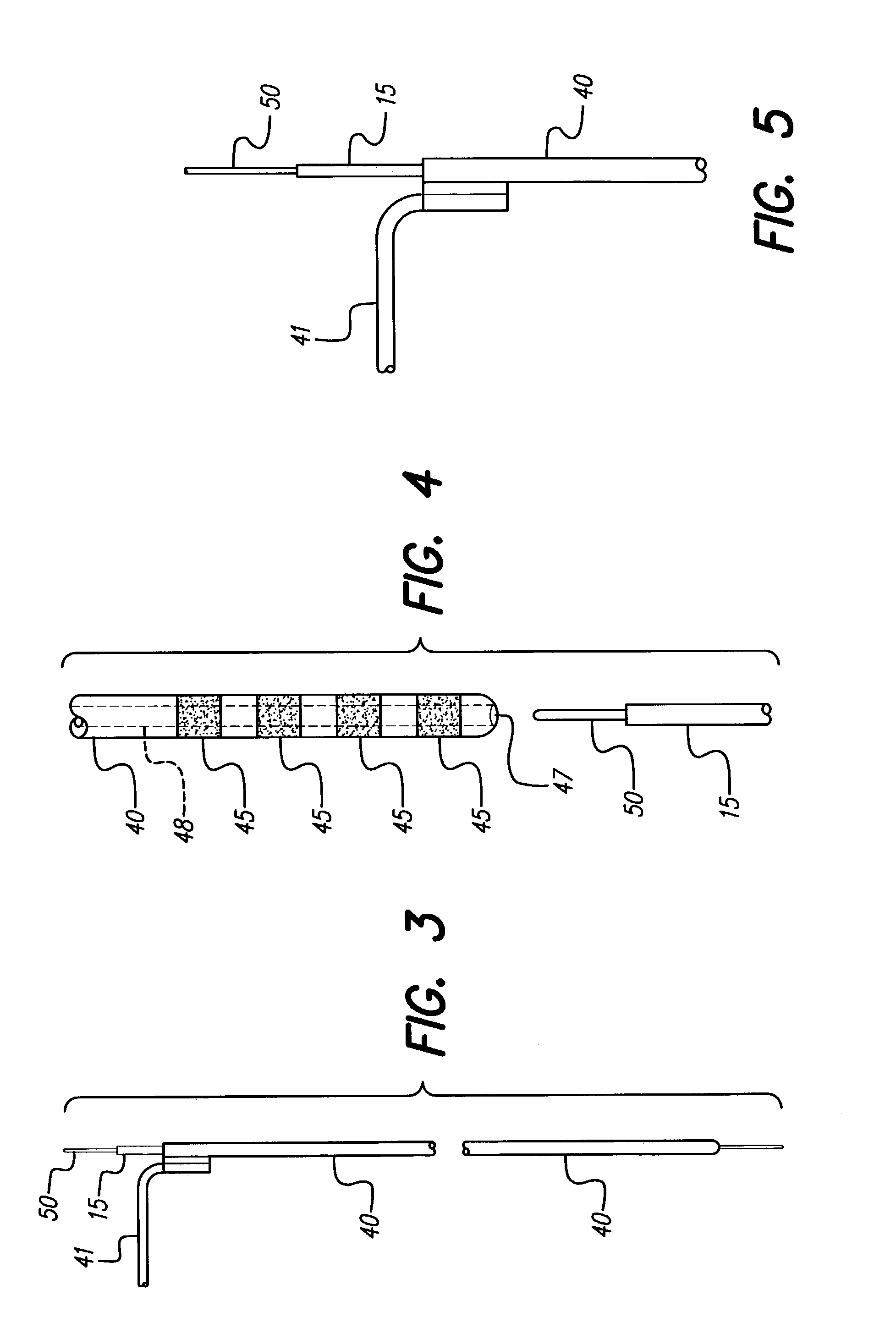System for permanent electrode placement utilizing microelectrode recording methods
a recording system and electrode technology, applied in the field of medical leads and microelectrode recording systems, can solve the problems of intracranial bleeding, puncturing the vessel, and none of these companies manufacture their own microelectrodes, and achieve the effects of reducing critical operating time, preventing tangling with the microelectrode, and increasing the accuracy of placemen
- Summary
- Abstract
- Description
- Claims
- Application Information
AI Technical Summary
Benefits of technology
Problems solved by technology
Method used
Image
Examples
example 1
Microelectrode Placed Before the DBS Lead
[0093]An introduction cannula is inserted into the brain. The microelectrode is inserted through the cannula with the connector attached and cell recording is performed. When a promising tissue site is found, the connector is detached from the microelectrode and the Advanced Bionics DBS lead is inserted over the proximal end of the microelectrode and advanced into the brain until an electrode on the DBS lead is precisely at the located tissue site. Macrostimulation is performed with the DBS lead. If a physiologically acceptable response is obtained, then the microelectrode may be withdrawn and the DBS lead may be fixed for permanent implantation. If the physiological response is not acceptable, then the DBS lead and or microelectrode can be repositioned together or separately to locate a suitable tissue site.
example 2
Microelectrode Placed Concurrently with DBS Lead
[0094]An introduction cannula is inserted into the brain. The microelectrode / Advanced Bionics DBS lead combination is inserted through the cannula with the connector attached to the microelectrode. The microelectrode is advanced slightly out of the distal end of the DBS lead and cell recording is performed. When a promising tissue site is found, the DBS lead is advanced over the distal end of the microelectrode until the electrodes on the DBS lead is precisely at the located tissue site. Macrostimulation is performed with the lead. If a physiologically acceptable response results, then the microelectrode may be withdrawn and the DBS lead may be fixed for permanent implantation. If the physiological response is not acceptable, then the DBS lead and or microelectrode can be repositioned such that microelectrode recording and / or macrostimulation can be performed until the DBS lead is properly positioned.
example 3
Microelectrode Placed after the DBS Lead
[0095]An introduction cannula is inserted into the brain. An Advanced Bionics DBS lead has been inserted into the brain but the macrostimulation does not yield the desired physiological response. There is no microelectrode inserted inside the DBS lead. A microelectrode is then inserted through the DBS lead, and a microrecording is performed to locate a suitable tissue site. The lead position (depth) is then adjusted to coincide with the located site.
PUM
 Login to View More
Login to View More Abstract
Description
Claims
Application Information
 Login to View More
Login to View More - R&D
- Intellectual Property
- Life Sciences
- Materials
- Tech Scout
- Unparalleled Data Quality
- Higher Quality Content
- 60% Fewer Hallucinations
Browse by: Latest US Patents, China's latest patents, Technical Efficacy Thesaurus, Application Domain, Technology Topic, Popular Technical Reports.
© 2025 PatSnap. All rights reserved.Legal|Privacy policy|Modern Slavery Act Transparency Statement|Sitemap|About US| Contact US: help@patsnap.com



